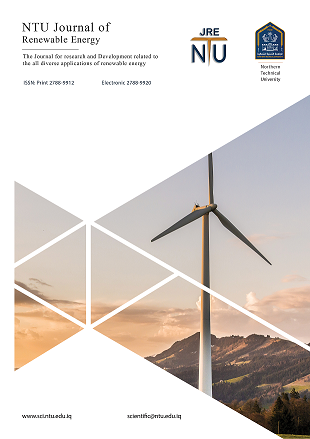Analysis of the performance of a 25-level inverter with a minimum number of switches and reduced harmonics for an environment solar energy
DOI:
https://doi.org/10.56286/ntujre.v6i1.891Keywords:
PV solar; Maximum Power Point Tracking (MPPT); Multilevel inverters(MLI); MC-SPWM algorithm; Total Harmonic Distortion (THD).Abstract
A multilevel inverter is a type of electrical equipment that converts a DC voltage to a higher AC value by creating a stepped waveform using several voltage levels. Multilevel inverters may create waveforms with three or more voltage levels, although regular inverters cannot. This separation results in lower harmonic distortion, decreased electromagnetic interference, and higher efficiency. An innovative MLI design that makes use of fewer switches and PV sources solves this problem. The Perturbation and Observation (P&O) approach is used to derive the Maximum Power Point Tracking (MPPT) from these PVs. The MC-SPWM technique was used in the design, simulation, and construction of single-phase and three-phase multilevel inverters with inverter levels ranging from three to twenty-five. The technique's cornerstones are phase disposition (PD-PWM) and power quality improvement. The main goal of the paper objectively analyzing the issue of power-system harmonics, providing information on causes, effects, and useful harmonic mitigation strategy.
Downloads
Published
Issue
Section
License
Copyright (c) 2024 NTU Journal of Renewable Energy

This work is licensed under a Creative Commons Attribution 4.0 International License.








